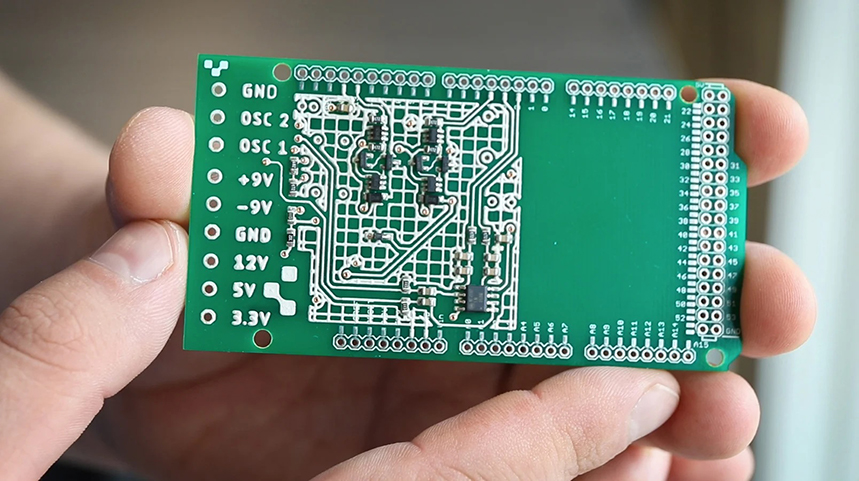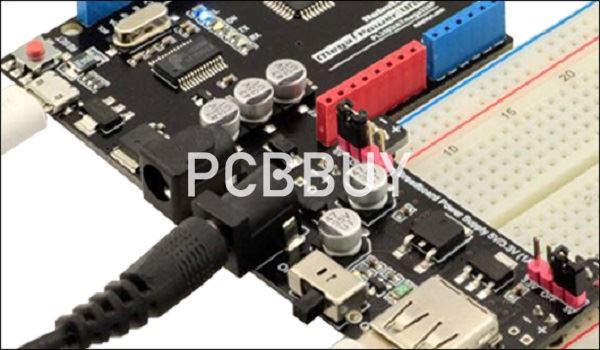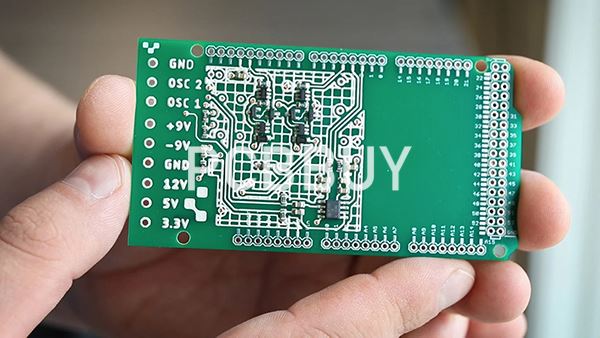PCB Board VS Breadboard: What Are the Differences between Them?
By:PCBBUY 11/08/2021 10:14

PCB prototype is an important process to your project’s development, which is a trial manufacturing for the printed circuit board before mass production, electronic engineer is designing the circuit and that is mainly in doing small volume trail manufacturing for PCB manufacturer after designing the circuit and finishing PCB layout for the electronic engineer. However, there is no limit for PCB manufacturing quantity, generally speaking, PCB prototype is the best practice method to verify the quality of a design before proceeding.
During the PCB manufacturing process, if you are curious about the details about PCB board VS breadboard, please check and read the content for more information.

What is breadboard actually?
The term breadboard goes back many years, to the start of circuit boards themselves. Manufacturers would mount sockets to a piece of wood – quite often the same type of wood you would cut bread on. The story behind the name says that the engineer could only find the breadboard for his prototype.
Since you can remove and change components on a breadboard, you would make a breadboard before developing the permanent PCB. You would draw out the schematics and connect the wires accordingly.
The centre of the board is the prototyping area that consists of two rows of five holes. A channel runs between the two rows in which you would place a chip with pins on either side to stop them from connecting together. You’ll also find power busses (either one or two) on the side of the breadboard for running power and grounding.
What are the advantages of breadboard?
· On this board circuits created are have a permanent assembly.
· The current-carrying capability of this board is larger than the breadboard to draw more current we can create different paths that do not exist in the breadboard.
· To make exterior linking there is an addition of different components is used in this board.
· This board is mounted with a heat sink that makes it rigid.
· The circuit created on this board has clean look while the breadboard circuit shows complicated circuit assembly.
· In almost every type of electronic module, this board is used.
· The circuit understanding on the PCB board is very easy due to simple assembly.
What are the advantages of PCB?
· These are some benefits of PCB over breadboard.
· The circuit designed on this board for a long time and can be used in different electronic devices for circuit manufacturing.
· In the printed circuit board large amount of current can pass as compared to breadboard, we can draw current paths for large current requirements.
· We can also construct different points for exterior components linkage.
· We can also connect heat absorber on this board to reduce the heating during circuit operation.
· This circuit board is more common to use in different engineering projects breadboard.
· Due to open wiring system on the breadboard, it looks complicated but conductive paths are designed on the PCB board so its circuit construction is very simple.
· The connection on the board is very easy to understand on a printed circuit board while it not possible in a breadboard.
What are the differences of PCB vs breadboard?
Breadboards are never meant for building permanent circuits, but they are quite useful when you are testing circuits based on new ideas and tweaking to obtain what you want. On them it easy to change components and it is relatively easy to measure. But breadboards are good just on low frequencies, and useless on low noise, low leakage, high frequencies, high power, high tension, and/or high currents. Other use for breadboards is teaching on school labs, as it is easy and fast to assemble simple circuits on them.

Many times I do prefer to build a spider web circuit than using a breadboard. Maybe because I started building electronic circuits before breadboards where good and cheap enough. But that is me.
Printed circuits are meant to be (more) permanent. There are several software to design and route PCBs. But on critical circuits there is no big help on those CAD software and to get a good PCB you need a deep understanding of what you are doing, most times routing yourself the tracks. In some cases you are building components on the PCB, as L, C, filters, resonant circuits, many times on waveguides and/or transmission lines. On these cases maybe you are testing / developing the PCB itself and you have no way to avoid the PCB, not one but as many as needed.
PCB is better than a breadboard because-
· The connections are permanent. Try shaking the breadboard upside down especially with heavy components.
· Far better current carrying capacity. You can make your traces wider to take more current. Breadboards have limited current carrying capacity due to the connections.
· You can add terminals to your PCB for external connections.
· You can mount heat-sinks to the PCB to make them rigid.
· Generally a PCB looks great (do it properly).
· On the PCB it is normally easier to understand the circuit. None of those looping wires going everywhere.
· Nobody is going to buy your great, fantastic, electronic design (product) on a breadboard.
Industry Category











